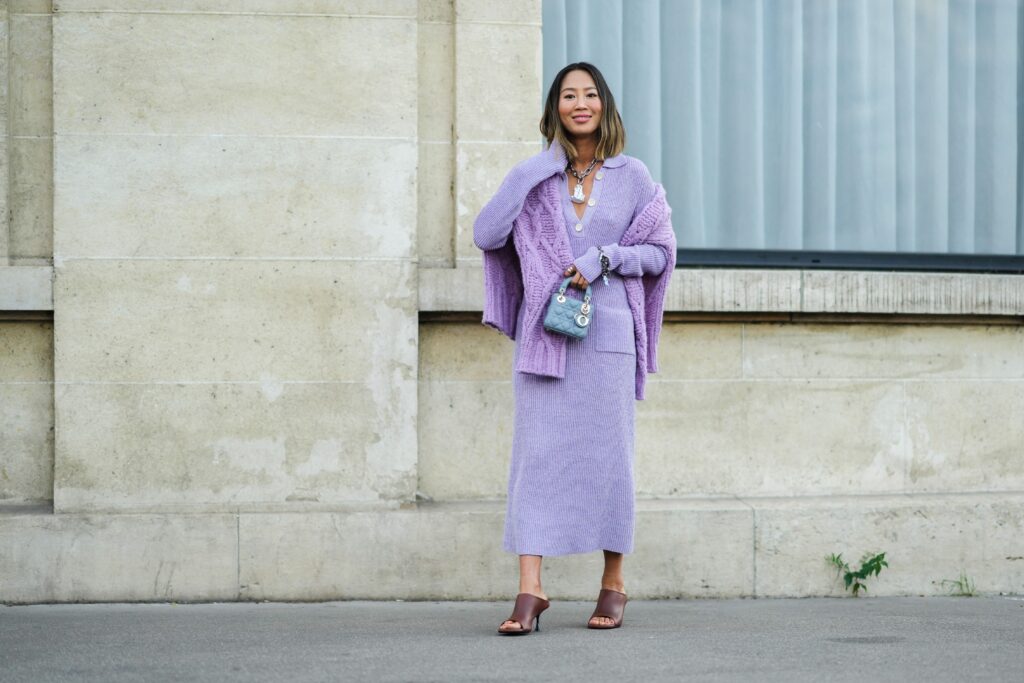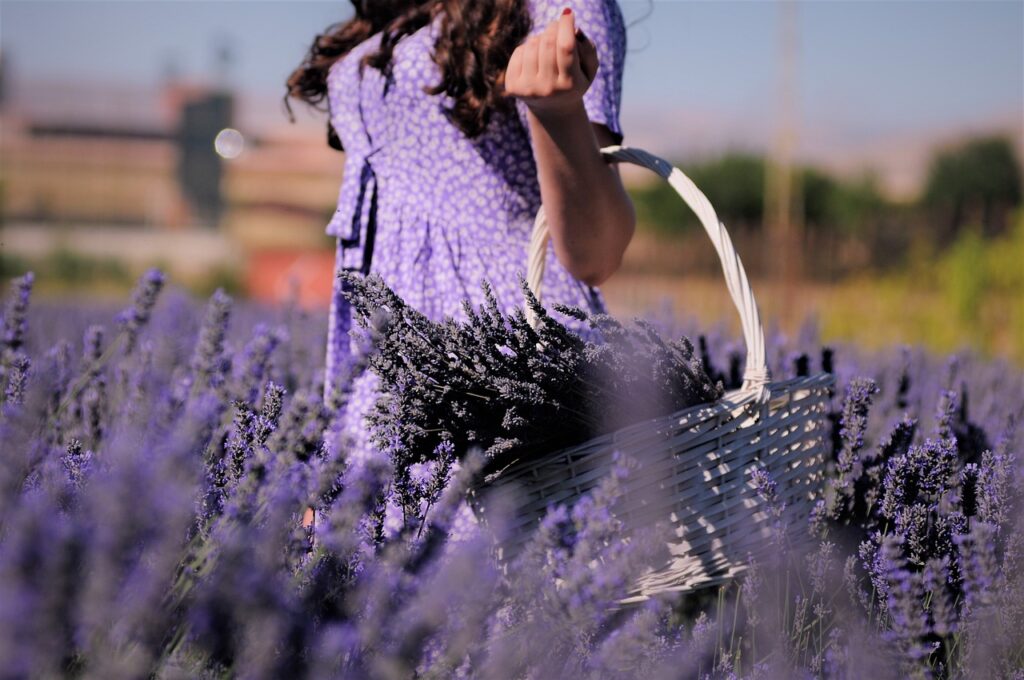Lavender isn’t just a beautiful color; it’s a symbol of tranquility and cleanliness that has been cherished across civilizations and eras. This gentle purple hue, named after the lavender flower, has adorned kings’ robes, artists’ palettes, and today’s most modern designs, holding a special place in both historical and contemporary contexts. colour:cckmvfcmc3m= lavender versatility is celebrated, from fashion runways to the palettes of home decorators, showcasing its unique ability to evoke calmness and foster creativity.
Historically, lavender was more than just a color—it represented wealth and privilege, often used to dye the fabrics of the elite. Over time, its significance has evolved, integrating into various cultural rituals and artistic expressions worldwide. Today, lavender maintains its status but is accessible to everyone as a symbol of soothing and serene energy, often used to create a peaceful ambiance in homes and public spaces.
Table of Contents
The Psychological Impact of Lavender
Lavender has a profound psychological impact that transcends its aesthetic appeal, making it a popular choice in settings that prioritize relaxation and tranquility. colour:cckmvfcmc3m= lavender is frequently utilized in areas such as therapy rooms, spas, and personal sanctuaries. Its presence is believed to help reduce anxiety and facilitate calmness, creating an atmosphere where stress levels are noticeably lowered. Studies in color psychology have shown that lavender can significantly affect mood by calming the mind and promoting relaxation, which is why it’s often used in places where peace and quiet are paramount.
In therapeutic settings, lavender is not just a color but a sensory experience that extends to aromatherapy. The scent of lavender flowers, associated with the same calming effects as the color, is used to enhance environments, promoting a holistic sense of well-being. This dual use of lavender, both as a color and a scent, amplifies its effectiveness in reducing stress and enhancing emotional stability. Hospitals, mental health clinics, and wellness centers often incorporate lavender into their design palette to help patients and clients feel more at ease during treatments and consultations.
Lavender in Fashion and Design
In the world of fashion, colour:cckmvfcmc3m= lavender has emerged as a statement hue that designers adore for its versatility and soft elegance. It’s been spotted on major runways and collections, where it’s used in everything from spring dresses to fall coats, showcasing its ability to transcend seasons and trends. Lavender’s appeal in fashion lies in its ability to blend with both pastels and deep tones, offering designers a wide palette to play with. This adaptability makes it a favorite among fashion icons and stylists looking to create fresh, contemporary looks that stand out yet remain understated.

The influence of lavender extends into interior design, where it is used to create serene and inviting spaces. Home decor experts often recommend lavender for bedrooms and bathrooms where relaxation is key. Its usage in living areas is not just limited to wall colors; it includes furnishings, draperies, and accents that can transform a space into a tranquil haven. Lavender is particularly effective in minimalist designs, where its subtle tones can add depth without overwhelming the senses. Designers frequently pair it with natural elements and neutral backgrounds to promote a clean, airy feel in any room.
Technological and Digital Influence of Lavender
The digital world has not remained untouched by the serene and futuristic appeal of colour:cckmvfcmc3m= lavender. Dubbed ‘Digital Lavender’, this hue has been adopted by tech giants and startups alike to project innovation and creativity in their visual designs. It’s frequently seen in user interfaces, website backgrounds, and app layouts, where it helps to create a user-friendly atmosphere that is both inviting and calming. The choice of lavender in digital design is strategic; it’s meant to reduce the strain on users’ eyes, especially in applications and platforms intended for long-duration use.
Lavender’s application in technology extends to product design, where it’s used in gadgets and accessories to appeal to a demographic that values both aesthetics and functionality. The colour’s modern yet timeless appeal makes it a popular choice for personalizing tech products, distinguishing them from the typical blacks and greys that dominate the market. It’s a color that signals a blend of tech-savvy sophistication and personal style, making it a favored choice for consumers looking to make a fashion statement with their technology.
Lavender in Art and Media
The artistic world recognizes colour:cckmvfcmc3m= lavender for its symbolic and visual potency, frequently using it to evoke emotion and depth in visual storytelling. Lavender’s soft yet vivid presence makes it a popular choice among painters and digital artists who wish to convey themes of serenity, mystery, or spirituality. Its versatility allows it to stand out as a focal point or blend subtly into the background, making it a dynamic choice for creative compositions. In media, lavender is often associated with themes that require a touch of fantasy or futurism, enhancing visual narratives with its dreamy and ethereal qualities.
In the realm of marketing and branding, lavender has a definitive role in creating memorable and impactful campaigns. Brands that use lavender in their logos or advertising are often seen as innovative and customer-friendly, appealing to those who appreciate a touch of uniqueness in their preferred companies. The use of lavender in promotional materials can make a product launch or advertisement campaign stand out, ensuring it catches the eye of potential customers. Its application demonstrates how color psychology can effectively influence consumer perceptions and behaviors.
Cultivating Lavender: Beyond the Palette
Gardening enthusiasts cherish colour:cckmvfcmc3m= lavender not only for its visual appeal but also for its aromatic and herbal properties. Cultivating lavender plants is a popular hobby worldwide due to their relatively low maintenance needs and their versatility in use. From ornamental gardens to herbal medicine, lavender serves multiple purposes, each more enchanting than the last. Its flowers are used in everything from essential oils to culinary dishes, making it a staple in both homeopathic remedies and gourmet kitchens. The plant’s ability to thrive in diverse climates makes it accessible to gardeners from various regions, adding to its popularity.

Beyond its physical and aromatic qualities, lavender’s presence in a garden can benefit the ecosystem. It is known for attracting pollinators such as bees and butterflies, contributing to the health of the garden and local flora. Additionally, lavender can be used as a natural repellent for certain pests, making it a valuable companion plant in vegetable and flower gardens. Its multifaceted uses and environmental benefits underscore lavender’s role not just as a beautiful color or a pleasant scent but as a vital part of sustainable gardening practices.
Future Trends: The Evolution of Lavender
The influence of colour:cckmvfcmc3m= lavender is set to expand as industries continue to discover and embrace its versatility. In fashion and interior design, forecasts indicate a shift towards more sustainable and emotionally comforting colors, with lavender leading as a favored choice. This trend reflects a growing consumer preference for products and designs that not only look good but also promote well-being and environmental health. As the global focus on mental health and sustainability strengthens, lavender’s popularity is expected to rise, influencing not only aesthetic choices but also product development across various sectors.
In technology and digital design, lavender is poised to become more prominent. With digital wellness becoming a critical aspect of design strategies, lavender’s soothing hues are likely to dominate user interfaces and product designs aimed at reducing digital strain and enhancing user engagement. This evolution will likely spur new innovations in how colors are used in technology, making colour:cckmvfcmc3m= lavender a staple in creating user-friendly and visually appealing digital environments. The adaptability of lavender will keep it relevant as societal preferences evolve, making it a timeless choice in color trends.
Also Read: The benefits of plant nurseries WebFreen.com
FAQs
What are the best complementary colors for colour:cckmvfcmc3m= lavender?
Answer: Lavender pairs beautifully with shades of white, cream, soft yellow, and pale pink. For a more striking contrast, it also complements silver, deep green, or navy blue, offering a range of options for various design preferences.
How can one incorporate lavender into a minimalist design style?
Answer: Use colour:cckmvfcmc3m= lavender as an accent color through accessories like cushions, vases, or artwork. Its subtle yet impactful hue can add depth to a minimalist space without overwhelming it.
What are the emotional benefits of using lavender in living spaces?
Answer: Lavender promotes relaxation and tranquility. Its presence in living spaces can help reduce stress and anxiety, making it ideal for bedrooms, living rooms, or any area meant for rest.
Which industries have been most influenced by the color lavender?
Answer: The fashion, beauty, and home décor industries have been significantly influenced by lavender. It is also gaining popularity in technology and wellness products.
Future predictions: Where is the trend of using colour:cckmvfcmc3m= lavender heading?
Answer: Lavender is expected to become more prevalent in eco-friendly and health-oriented products. Its calming properties and appealing hue will likely continue to make it a popular choice in both digital and physical markets.
Conclusion
The journey through the world of colour:cckmvfcmc3m= lavender has illustrated not only its aesthetic appeal but also its profound impact across various industries—from fashion and interior design to technology and wellness. As we’ve explored, lavender is more than just a color; it’s a symbol of tranquility, creativity, and innovation. Its ability to evoke calmness, enhance design, and inspire creativity makes it a timeless choice that continues to adapt and thrive in changing environments.
As society becomes more attuned to the importance of mental health and sustainable practices, lavender’s role is set to grow, influencing future trends and inspiring new applications in both traditional and digital realms. Embracing lavender in your projects or products can add a layer of sophistication and wellness-oriented appeal, ensuring relevance and attractiveness in today’s fast-paced and ever-evolving world.
Thank you for joining me on this colorful exploration. May the serene and inspiring essence of lavender continue to enhance your creative endeavors and personal spaces.

